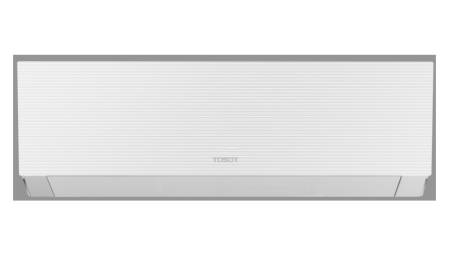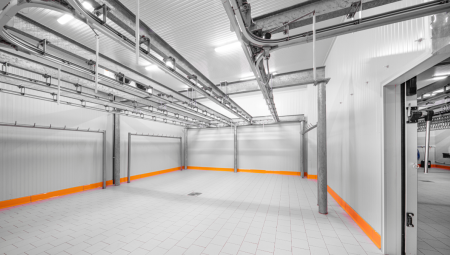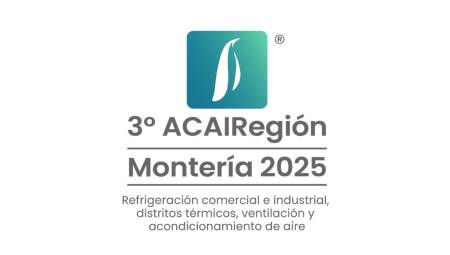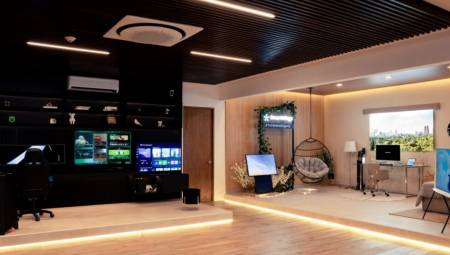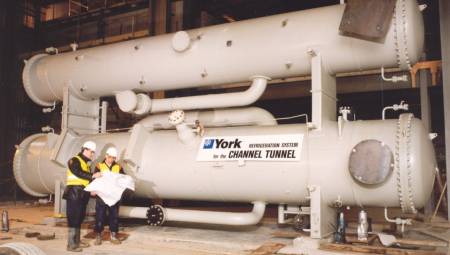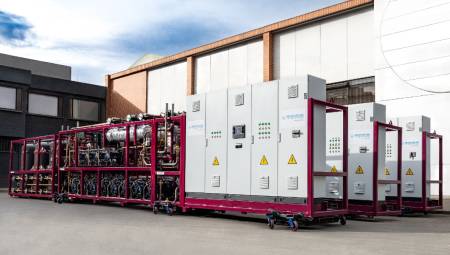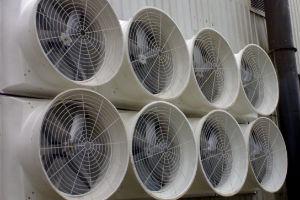 In times of extreme heat, ventilation becomes a necessity of the first order in Latin American countries. In this sense, technological evolution is due to demand and is very dynamic.
In times of extreme heat, ventilation becomes a necessity of the first order in Latin American countries. In this sense, technological evolution is due to demand and is very dynamic.
by María Cecilia Hernández
Offer thermal comfort , but also ensure the health of people; saving energy and, with it, money, are the clear objectives towards which the new advances in the field of ventilation point, whatever the segment to which it belongs: industrial, commercial or residential.
From smart ventilation equipment, to those that offer "zero noise" as an advantage, there is a varied range of industrial ventilation systems that evolve daily. However, in the end, everyone from manufacturers to end consumers pursues the same goals mentioned at the beginning.
ACR LATINOAMÉRICA consulted with several experts from the HVACR industry about the new technologies that exist in the field of industrial ventilation and their development in the Latin American region; who also offered the best recommendations to make effective use of this type of equipment and give them adequate maintenance.
Distribute air throughout the space
According to Katie Hunt, communications manager of the industrial area of Big Ass Fan Company, by design, traditional HVAC systems consume a lot of energy, regardless of their degree of efficiency.
Hunt indicates that for that reason and as a way to improve the efficiency of ventilation, "low-speed and large diameter fans have begun to be used, which have proven to be an effective method to help circulate air inside a space, reducing the workload of ventilation and air conditioning systems. They are a kind of complement; that is, while the ventilation system supplies the air, the fans that were mentioned help to distribute it throughout the space, and thus ensure that the quality air is served to all the occupants of that place. This applies to commercial, industrial or agricultural facilities."
Smart Controllers
But not only the equipment has been evolving, the controllers, for example, have also implemented new functionalities, adapting to the needs of the consumer and the demands of the environment.
"In the field of industrial ventilation it is essential to have a good control system, on this issue the most significant advance is the On - Off controllers that seek to regulate energy consumption in an 'intelligent' way. They are integrated into the fans and arguably manage their operation. These controllers allow energy savings because they use it only when strictly necessary, properly regulate the temperature based on the conditions of the physical space and, consequently, decrease the economic investment and contribute to the health care of the users, "explained Rodnei Peres, export and sales manager of Full Gauge for Latin America.
In summary, the evolution that occurs in the subject of industrial ventilation revolves around two basic elements: energy and money saving, and care for the environment and human health. In this sense, industrial ventilation specialists focus all their efforts on design, engineering, installation and maintenance on issues of:
- Collection of powders.
- Collection of fumes.
- Destruction of volatile organic compounds (VOCs).
- Gas neutralization.
- Conversion of collectors (Baghouse).
- Process ventilation.
- Evaporative air handling units (UMA).
- Ventilation with individual extractors / injectors.
- Heat recovery.
- Conditioning of work areas.
The filter is essential
According to experts from the multinational Trane, a fundamental element of the ventilation system and in which technology has been of great help is the filter medium, which in the case of the industrial segment, "is composed of thermally bonded synthetic fibers, highly resistant to rupture and with great filtration benefits, even from the beginning of its operation".
As explained by the interviewees, the filter medium offers solutions to ventilation problems such as heat, dust, smoke, gases, condensation, odors, among other factors. And it is useful in all types of spaces: factories, industrial buildings, workshops, warehouses, farms, greenhouses, warehouses, garages, etc.; giving solutions tailored to each need.
Luxury or necessity?
Ventilation, in all its segments and for all possible utilities, more than a luxury, has become a need for high demand, and one of the causes is global warming and climate change, which in some countries manifests itself with seasons of strong summers.
In Mexico, for example, companies serving a domestic market have recorded a 90% increase in their sales of air conditioning and ventilation equipment, only in the first four months of the year (2011). And the companies that offer their services to the industrial and commercial sector, have reported growth ranging from 25% to 100%.
As indicated by Katie Hunt, in Latin America thermal comfort is a necessity due to the climatic characteristics of the region, "therefore, all the advances that occur in that sense are very well adopted in that part of the world."
Likewise, the Brazilian Rodnei Peres, who also explained that "Brazil, Colombia, Mexico and Argentina are the countries that are at the forefront of the development of state-of-the-art industrial ventilation systems; the other countries are keeping pace with us in the application of new technologies."
Peres commented that "for example, advances that occurred first in Europe and took centuries to get here, today the opposite happens, first they happen here and then they are taken and applied to other countries. Perhaps the reason why in other countries the development in the issue of technologies for industrial ventilation does not occur so strongly has to do with culture: a part of Latinos is afraid to apply new technologies. The influence that the United States has on the rest of the world and especially on Latin America is well known, and since they dedicated themselves to manufacturing equipment with mechanical thermostats, other countries continue to know that the trend is towards electronic systems and equipment. "
Maintenance, air quality and long life
Finally, the professionals interviewed established some recommendations that must be followed to extend the useful life of the equipment, guarantee quality in the ventilation service for the industrial segment and take care of both the pocket and the health and the environment:
Maintenance tasks are usually performed at least every three months. Installation, testing and maintenance require specialized and competent professionals, industrial hygienists, recruitment engineers and qualified personnel.
When ventilation systems are not routinely maintained, over time they stop distributing the necessary exhaust airflow, either due to degradation of the natural system over time or unauthorized changes.
The most common causes of poor maintenance are: dust escaping from hoods, contaminants in the exhaust pipe or contaminants in air samples that exceed recommended exposure limits, clogging ducts or any other condition that may reduce the airflow of the system.
Some recommendations for preventive maintenance of industrial ventilation systems are:
- Gather the original airflow data taken in the commissioning system. The data includes air velocities and static pressure through the system at the chosen test points. This is known as "reference measurements."
- Measure the static pressure of the system and the speed of the air flow at the test points. This is known as "data monitoring."
- Compare monitoring data for baseline measurements to ensure that the air velocity or static pressure for which the system was designed is actually achieved. This is known as a "baseline system restore."
- A difference of more than 20% between the measured static pressure and the reference static pressure, indicates an early warning of the failure of the system under development or degradation.
- Take samples of the area and personnel while the industrial fan is on. Exposure levels should be below exposure limits if the industrial fan is operating as intended.
"If the system is not well designed, installed and maintained, it cannot be effective in removing pollutants in the air, which can result in adverse health effects, or safety and operational issues," they warn from Trane.


